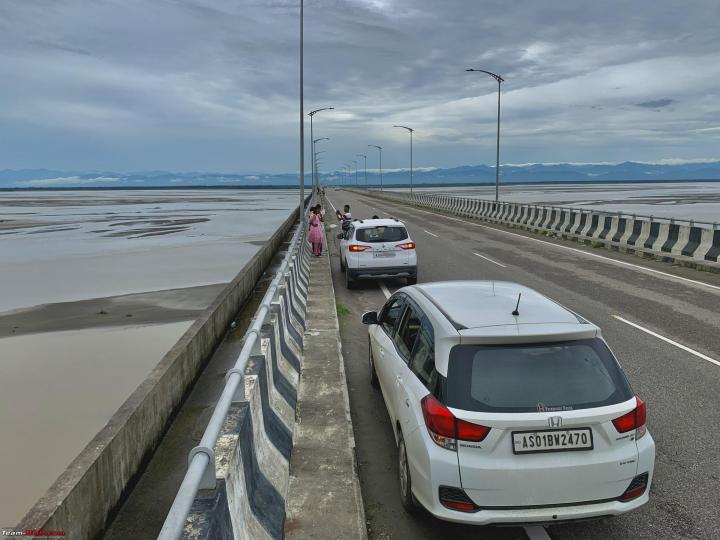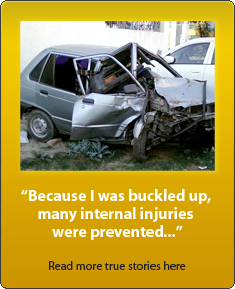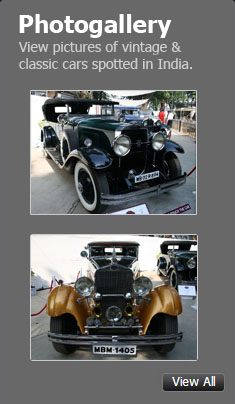News
1600km road trip with my Honda Mobilio: In search of an allied aircraft
I was part of a small documentary filmmaking team, tracing the story of the fallen Allied aircraft from 1944.
BHPian Hirohito recently shared this with other enthusiasts.
Hi this is Shisir from Assam and I’ve been visiting Team-BHP forums for almost a decade now, mostly reading about vehicles that I’ve owned over the years, including a Fiat Palio, Maruti 1000, Zen Vxi and Royal Enfield Thunderbird twin-spark.

My current interests
I currently own a 1985 SS80 (Emperor Hirohito) and a 2016 Honda Mobilio petrol. This is my very first post, a travelogue of my recent trip to a village in Nagaland where I’ve been travelling, as part of a small documentary filmmaking team, tracing the story behind an Allied aircraft that crashed here in August of 1944.

Recap
In the previous two trips to the village, I’ve done it on my old yet reliable 1985 SS80 and it has aced both times, including crossing a river on the second trip.
On both occasions, we drove 500 km straight to the village from Guwahati in a single day’s journey, parked the car, did what we had to do on foot and drove back home.

This year instead of Emperor Hirohito, I am taking the recently purchased 2016 Honda Mobilio petrol and unlike in previous years, we are going to extend our journey instead of heading back home from the village.

The plan
- Day 1. Home to Guwahati (visit the Honda service centre). 150 km
- Day 2. Guwahati to Nagaland (the village in Mokokchung district) 400 km
- Day 3 & 4. At the village
- Day 5. Village to Jonai (Assam). 230 km
- Day 6. Jonai to Pasighat (Arunachal Pradesh). 55 km
- Day 7. Pasighat to Amguri (Assam) 270 km
- Day 8. Amguri to home. 450 km
Day One
Since I had an appointment at Spectrum Honda, Guwahati only at 2 in the afternoon, me and my wife started our journey from home at around 11 am. NH7 ran at its usual relaxed pace for a while flanked by Sal forests on both sides and at a distance, the Garo hills of the neighbouring state of Meghalaya.

At around 55km as we crossed Boko and got closer to Guwahati, the road transformed into a sea of slow-moving e-rickshaws and fast-moving ultra buses, sandwiching everything that came between the two. At 118 km, we arrived at Spectrum Honda, Guwahati. This is the first time that I was taking the Mobilio to a Honda service centre in my two months of ownership. As I had some errands to run in Guwahati, I decided not to go for a full service and instead asked my service advisor to check the brake and clutch and change the faulty AC switch, that was always on. In addition to getting the front brake pads changed, I also opted for a roadside assistance programme. The total bill came to Rs 6667, including Rs 1842 for the roadside assistance premium.
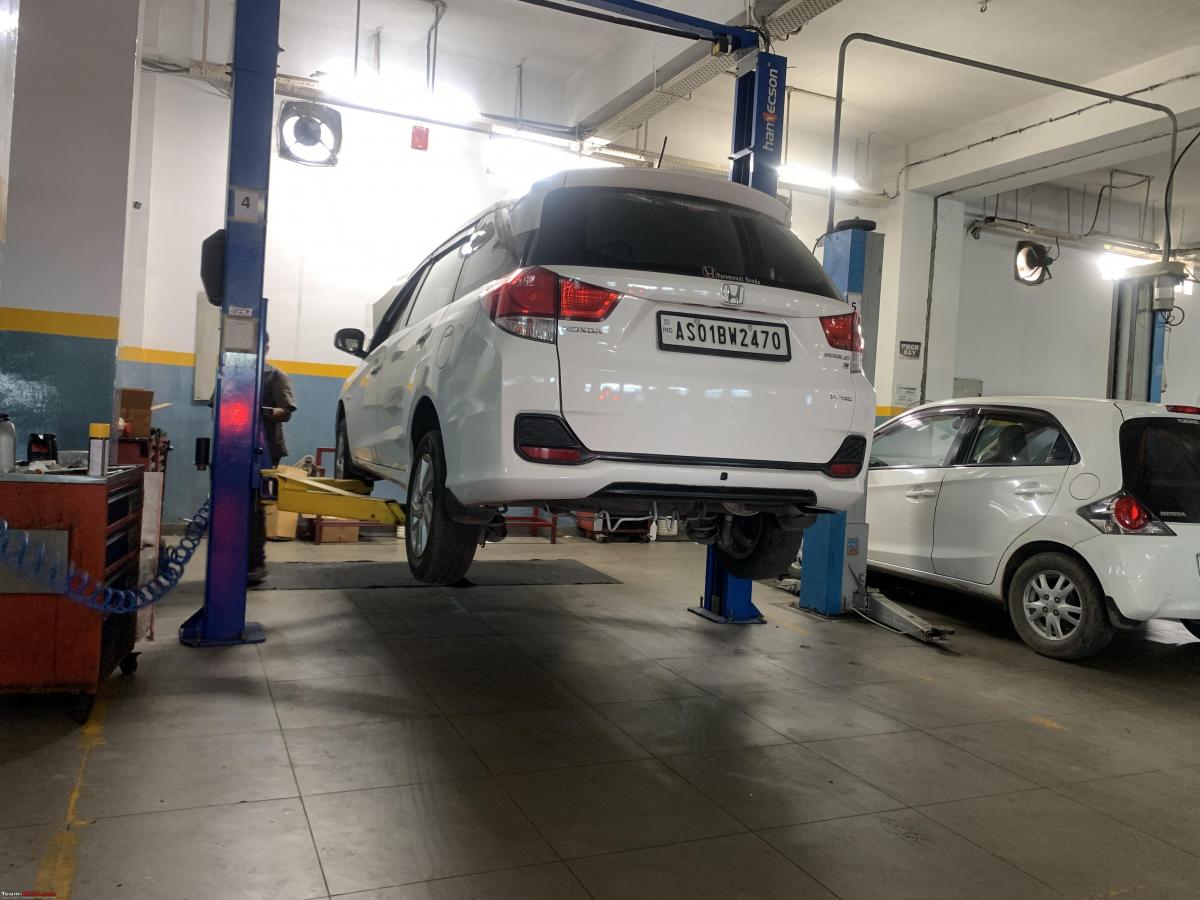
Day Two
Started at 6 in the morning from Guwahati and went to pick up Gaurav in the neighbourhood, who is joining the team for the first time. But what’s a journey without a surprise? Gaurav came with a dizzying array of equipment with him. Tripods, lights, light stands, cameras you name it. That’s in addition to some equipment that I had collected the previous night from a rental agency. In my mind, I was thanking my stars that I didn’t bring my SS80 for this year’s trip. I folded the third row and it started to drizzle as he loaded all the equipment in the car’s rear.
The three of us stopped at Jorabat for a cup of morning tea. Jorabat in Assamese means ‘a pair of road’ and here the road bifurcates, one leading towards the Khasi hills of Meghalaya and the other leading towards Upper Assam via Sonapur. We were taking the Sonapur road and our next stop was Jagiroad 55 km away, where we had to pick up Shyamal and Elora and have breakfast at Shyamal’s house. In the previous two times, it was Shyamal, Elora and me and the SS80 but this year we have Gaurav and my wife and the Mobilio. By now the Mobilio’s rear looked packed and if I needed anything from there, I had to rely on my memory and grope with my hands in the dark.
The weather looked cloudy and overall fantastic for a road trip. At around 11:30 we entered the Kaziranga wildlife area and I released pressure from the gas pedal. This area has speed restrictions and cameras installed all along the stretch.

We stopped for a quick tea break in a pretty shop cum nursery and by 1 pm we stopped for lunch at Pelican Dhaba at a friend’s suggestion. The food was great but the sun got brighter. At around 3 pm we stopped at Bokakhat to buy the famous Bokakhat pedhas for our acquaintances in the village. We have been showered with seasonal fruits and gifts each time we left the village in the previous years.
We soon reached Jorhat and unlike the previous years where we bypassed Jorhat town and followed the highway till Jhanji and then took a right for Amguri and Tuli, this year we decided to go through Jorhat town to reach Mariani and then Amguri, followed by the border town of Tuli. The objective was to avoid the bad stretch of the highway. From Mariani we took the historic Dhodar Ali road. The road was built by an Ahom King in around 1687 and he had employed a bunch of lazy people (dhod means lazy in Assamese), who otherwise avoided doing any kind of work.
Along the way, we crossed the Hoolongapar Gibbon sanctuary, which is home to India’s only gibbons and Bengal slow iris. But we had no plans of stopping. We were running late and the worst section of the road awaited us towards the very end of our day’s journey. In the previous years, while my SS80 managed to drive through, we had stopped to help an Opel Corsa and even a Thar. And although we were told that the road has improved, the actual condition remained a subject of speculation.

The Dhodar Ali road was narrow and in need of repair and we weren’t sure if we saved any time at all. At around 5.30 evening, we reached the Assamese town of Amguri. Flanked by tea gardens on both sides, it looked pretty scenic in what’s called the golden hour of the day in photography.

We soon crossed over to Nagaland on the Tuli border and we could see the Naga hills on the horizon. At the peak of WWII, the military conquest of Japan was rapidly expanding and blocked all land supply routes to China. The Allied powers wanted to supply China with arms and ammunition so they could keep the Japanese forces tied down. Thus the idea of creating an aerial route from its headquarters in India to China was envisioned. The pilots nicknamed this treacherous 550 miles aerial route The Hump. General William H Tunner commented in his memoirs, “It was safer to take a bomber deep into Germany than to fly a transport plane over the Rockpile from one friendly nation to another.” More than 700 aircraft were lost in the course of the Hump operations, their wreckage littered across remote terrains of Arunachal Pradesh, Nagaland, Assam, Meghalaya and China.

Just like the previous years, our Naga friend and teammate awaited us at Tuli in his red Renault Duster. We soon caught up with him and began the last leg of our journey from Tuli to the village. Although we could spot quite a few road-building equipments along the way, the road itself was far from good. And the extra load in the rear wasn’t helping matters, just like the overloaded hump aircraft that had to carry even their own fuel for the return journey from China’s Kunming to Assam.
A squeaking sound kept coming from the Mobilio’s underbody in the rear and it climaxed with a loud metallic thud. We realised it was the Mobilio’s spare wheel that had fallen off after repeated contact with the ground. Our friend promptly picked the wheel up and put it in his Duster. He offered to carry some of the cargo from my car as well. But since we were running late and he had already taken a wheel and a passenger, I suggested that we move on.

The Mobilio managed to reach the destination without scrapping its underbody. The torque felt adequate with an occasional need to shift from 2nd to 1st gear. At one moment it got itself stuck in the mud but managed to free itself with a little back and forth movement.
At 7.45 evening, we reached our destination. Dinner was already served in the Church guest house, which has become our second home in the course of this project.
Day Three and Four
The next morning we trekked to the crash site to mark the 78th anniversary of the crash.

The following two days, it was mostly Shyamal and Gaurav setting up cameras, and lights and our Naga friend, Tali interpreting the local Ao language into English for us. And although I have driven along Tali’s Duster on both my previous trips, it is only this time that I noticed the team-bhp sticker on it. Upon enquiring, he said that it came with the car which he bought pre-owned from a dealer in Kolkata. And all he knew was that the first owner happened to be a lady and that she must have travelled often with her dogs, as he found fur underneath the seats and the front seat belts partially chewed off. But that aside, the car came in immaculate condition with gorgeous Plati alloys.
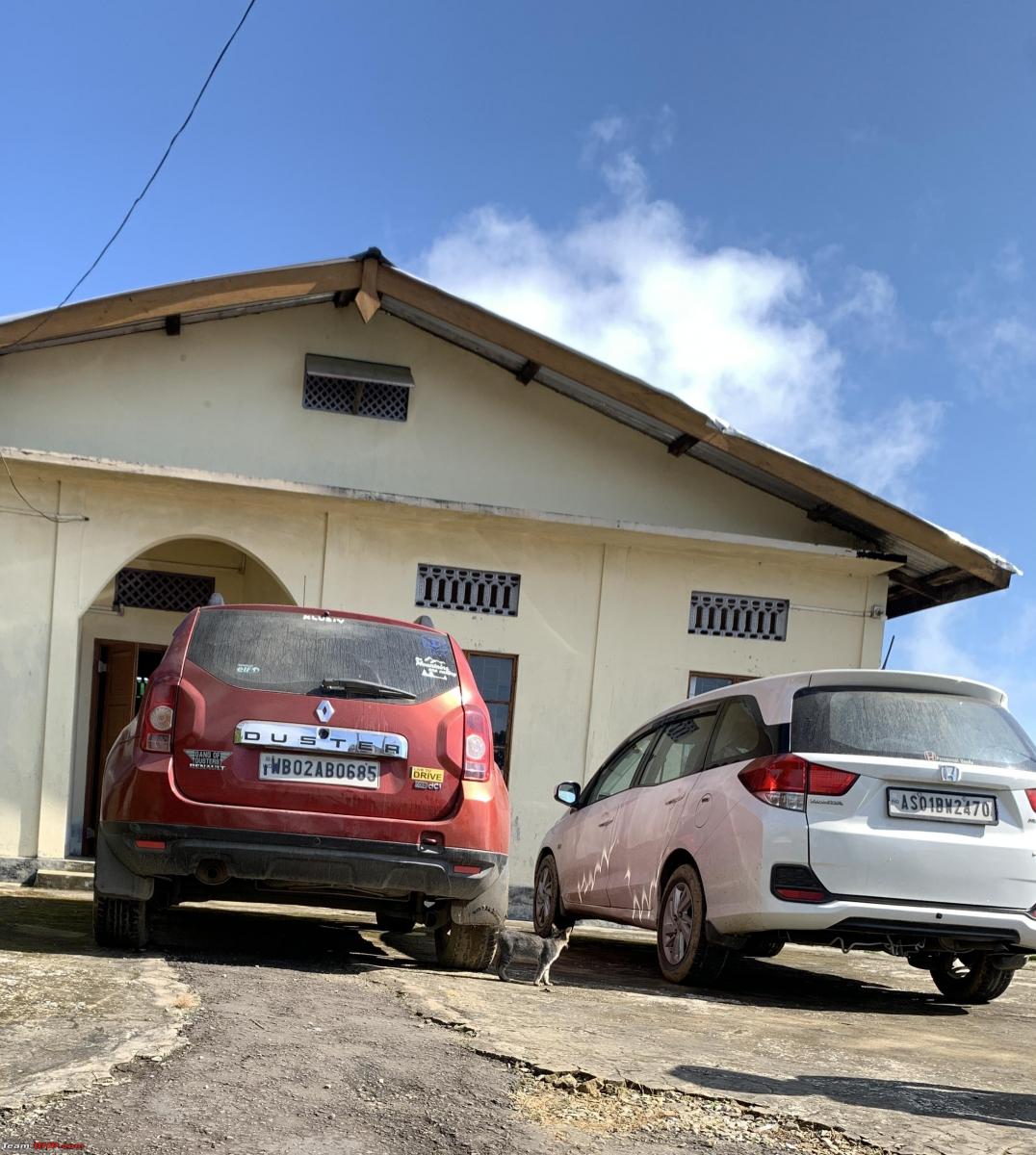
On the last evening, I cleaned the Mobilio and took out the spare wheel from the Duster and plonked it back into the rear tray and tied it with a nylon rope just to be on the safer side. The car felt confident during a short drive around the village, involving steep climbs and descents, meeting up with the crew. For the journey ahead, it will only be my wife and me and minus all the equipment.

Day Five
The plan is to drive down to Tuli, then Amguri and then meet up with my friend Jagat and his family at Jhanji intersection. From Jhanji we will be travelling together to Jonai. On the way we will be crossing the iconic Bogibeel bridge over the Brahmaputra.



It started to drizzle as we began our drive at 6 in the morning. We kept driving without stopping, as we had to meet up with Jagat at 9.30 am at Jhanji junction near Amguri. The road looked tamer than it looked that evening when we were climbing up. We missed a turn and ended up entering another village along the way. Some steep climbs and descents and we were back on the road to Tuli. And as luck would have it, we ended up bypassing some nasty sections of the road, where the Mobilio’s spare wheel had fallen off.


The drive from the village to Tuli is a mere 16 km, but it took us close to 2 hours. At Tuli, the road became smooth once again and we sped towards Amguri where I met a friend and checked out his recently acquired Isuzu V-Cross while waiting for Jagat’s call.
Soon, I got the call from Jagat we met up at Jhanji. Jagat’s wife is from Andhra Pradesh and she had promised us lemon rice for breakfast. So we started looking out for a spot to lay our breakfast.

With highway widening in progress around Moran, this stretch of the highway is anything but pleasant, save for the occasional tea garden to soothe the weary eyes. But soon we were heading towards the Bogibeel bridge and excitement was building up. At 4.94 km, Bogibeel is the second longest rail-cum-road bridge in Asia.

Day Six
We spent the night at Jonai at a friend’s place and the next day we started our journey towards Pasighat in Arunachal Pradesh. Just as we left our friend’s house in Jonai and landed on the highway, a Bolero slowed down and stopped in front of me. I recognised the Bolero having seen it on the Team-BHP forum on several occasions.
A quick shake of hands with Gunin and we were off to our respective destinations. Since it was now a full family affair, with Jagat, his wife and three kids and our friend from Jonai, his wife and two kids, we decided to check out some touristy locations around Pasighat, like the Ranaghat bridge, a river beach and the Sirki waterfall. Some believe that the Missing tribe of Assam descended through this waterfall to settle in the plains of present-day Assam.
We returned to stay at the Donyi Hango camp at Pasighat. Watched the kids play badminton and shared a game of housie together before calling it a day.

Day Seven
Being the 15th of August, most of the shops were shut and the roads were empty. We decided to move out early, as we were planning to have lunch at our friend’s home in Jonai. After lunch, we started our return journey. While Jagat and his family were planning to return home the very same day to Jorhat approx 270 km away, we were planning to stay at Amguri for the night. We crossed the Bogibeel once again. Only this time, the bridge was packed with revellers in cars and bikes, with the tricolour affixed to them.
Reached Jhanji tri-junction and parted ways with Jagat after a cup of tea and we spent the night at my friend’s house at Amguri.
Day Eight
The next morning, we headed out to check the Amguri tea estate in my friend’s V-Cross, while the Mobilio went for a wash.
At around 10, we began our final leg of the journey from Amguri. My friend, his wife and daughter would join us along the way till Guwahati. But they could only leave once their daughter had her nap.

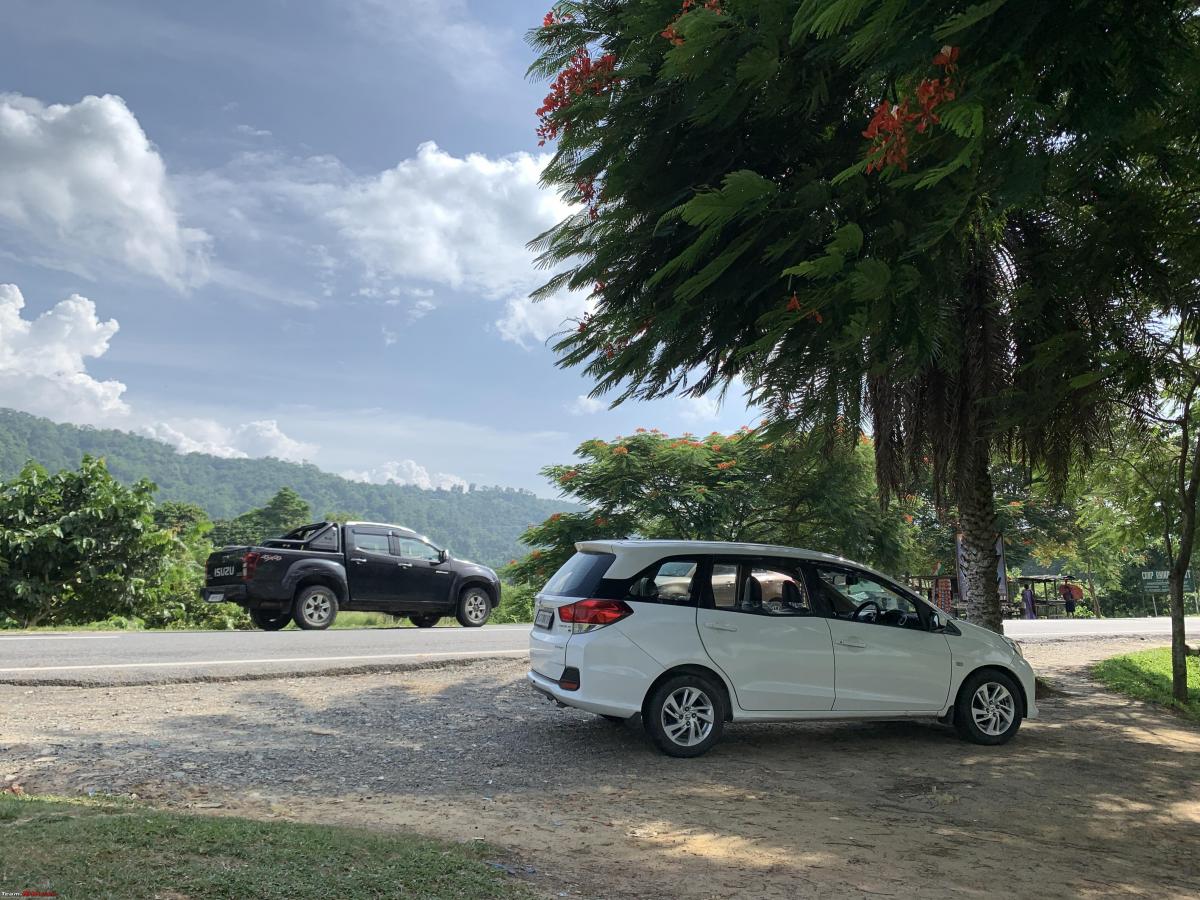
The journey towards Guwahati was pretty uneventful. A brief spell of rain greeted us near Sonapur on the outskirts of Guwahati and a massive traffic snarl in the Guwahati bypass. We had to travel another 120 kilometres to reach home.

But by the time we left Guwahati, I could feel the exhaustion and had to eventually pull over in a gas station and take a power nap for 10-15 minutes. I struggled to stay awake behind the wheel even after that. Took another break to splash water on my face. Traffic finally eased around 50 km shy of home. Reached home finally at around 10.45 pm, dot on time for dinner at home!
Total distance travelled: 1600 km.
Check out BHPian comments for more insights and information.




